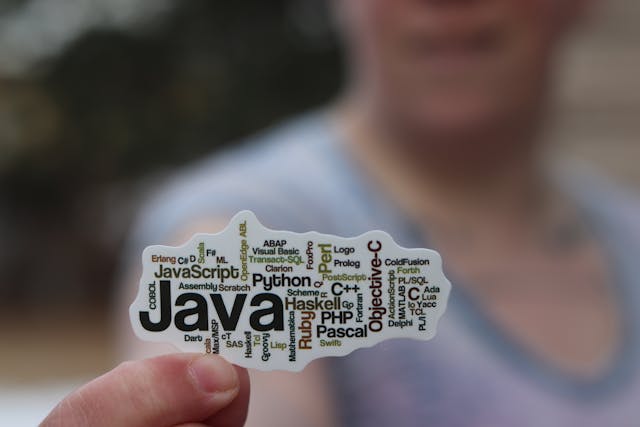SDLC Models and Methodologies for Effective Software Development
Do you want your business to have software that answers customer queries within the stipulated time? In that case, having a strong grip on the software development life cycle would be critical. Every business that is trying to deploy reliable software must understand that SDLC should be followed at its core.
Remember, the seven stages of the software development life cycle are used to create software that has minimum problems and maximum functionality. Nonetheless, understanding SDLC models isn’t the only task that can help you develop reliable software. Instead, you would also have to choose a software methodology that ideally matches your project requirements.
Different industries have different goals that might not be achievable through understanding either one of the SDLC models and methodologies. For this reason, in this article, we have provided a complete overview of SDLC models and methodologies.
Table of Contents
Defining the 7 Stages Under SDLC Methodologies
It wouldn’t matter whether you are an organization that is looking for recognized software or a software developer who is looking to start their project. Understanding every stage under the encryption of the software development life cycle would be crucial.
1. Drawing Plans
The first and foremost step regarding the software development life cycle would be to conduct an efficient plan with your software development team. Within this planning, you need to consider functional requirements, understand the workings of applications, and determine the variety of data that is required for running the software. This is the initial stage of your software development life cycle that has a big contribution to the overall functioning of new software.
2. Conducting Analysis
Once the first stage of the software development life cycle involving planning has been conducted. Moving towards analysis would help you decide whether the project will be feasible or not. Upon completing this analysis, you need to lay the groundwork for designing your required software.
3. Crafting the Design
Coming up with the designs of your project after initial planning and thorough analysis would be important in the third stage of SDLC. Within this stage, the architecture of your required hardware and software will be decided for moving on to the development phase.
4. Initial Development
On reading stage 4 of SDLC, that is where software coding starts to take pace. This stage involves dividing the tasks into smaller modules and units while coding based on the system requirements and project demands. Keep in mind that client specifications are crucial to efficient software development.
5. Frequent Testing
Developing the required software project will not mean your project has been completed. Instead, it would take you toward the next step, which involves continuous testing. In this stage, you will be able to understand whether your software requires any changes or corrections in its coding or other specifications.
6. Successful Implementation
In the sixth stage, the developers are required to send the software to their respective clients for deployment or implementation within their systems. However, before final implementation, beta tests are carried out to ensure the software is free from any errors.
7. Continuous Maintenance
In our last stage of the software development life cycle, you are required to regularly keep a close eye on the software’s performance. This would help you rectify any disturbances that might be hindering the system from functioning smoothly.
Top Methodologies of SDLC
1. Agile Methodology
The agile model has quickly become the industry benchmark when it comes to designing software models. Many businesses rely heavily upon the approach of agile models so that different sectoral needs are met through it.
Within the agile model, each module is checked thoroughly to determine if any changes are required prior to its release. At every stage, the project that is developed through the agile model gets rigorously tested.
With the help of the Agile model, the developers are able to get a closer understanding of smaller issues that could become bigger problems later on. Moreover, the agile model also urges the stakeholders to give continuous feedback. Even for complex software development projects, using Scrum methodology that functions upon the Agile framework could be a useful strategy.
2. Waterfall Methodology
Waterfall methodology is one of the first software methodologies that became popular in software development. It is a rigid software model that goes along a particular method without any disruptions. Waterfall methodology starts with basic requirements and ends with regular maintenance.
Moreover, before the start of the waterfall model, you need to define all the steps and specifications elaborately. Because after the conclusion of the project, going back and making changes would be pretty difficult. Even though this SDLC methodology is pretty old, it is still the preferred choice for many businesses.
3. Iterative Methodology
The following iterative methodology functions differently compared to other SDLC models and methodologies discussed until now. Within the iterative methodology, requirements are not defined, and extensive planning is not conducted.
Whenever a certain requirement is put into place, the developers are known to move past it as necessary. The primary goal behind the following iterative methodology is to achieve a successful development cycle that is continuous and produces better results until the finish line is breached.
Most importantly, this software methodology could end up being a cost-effective option where bugs or errors are fixed before the project is completed. Additionally, it also allows software developers to complete their work based on the requirements of clients.
4. Lean Methodology
The lean methodology is known for following a goal that aims towards the development of efficient software while reducing discrepancies. Moreover, by following this software methodology, the overall cost is reduced while trying to increase productivity through timely deliveries.
Compared to other software project developers, the ones who follow lean methodology are known to avoid multitasking. They believe in creating the best system that adheres to every facility based upon customer demands. But if you are trying to work on a complex project that doesn’t have flexibility, choosing to follow a lean methodology might not be the right idea.
5. DevOps
The majority of SDLC methodologies that have been mentioned in this list have been there for quite a long time. However, DevOps methodology has only recently been added to the software development model. DevOps is considered to have the application of Agile while going across following the principles of Lean methodology.
When businesses are moving into collaboration in order to extend their services. The software development models are also trying to evolve by combining the characteristics of different SDLC models and methodologies into one. Within the DevOps model, the developers are known to work in tandem alongside the operations team. This accelerates innovation while helping create magnificent software.
Why you should know about SDLC Models and Methodologies?
An organization or a software developer must learn about the importance of SDLC models and methodologies. It tries to minimize project risks while helping streamline the creation of software that adequately matches customer expectations.
Moreover, customers should continue to find satisfaction throughout the usage of your created software from the beginning to its lifetime.
Conclusion
Whenever a business is trying to meet the needs of the customers through the creation of efficient software. Learning the software development life cycle could turn out to be an advantage. It would help in managing the project efficiently while ensuring the software runs without causing problems for the client.
Frequently Asked Questions (FAQ’s)
Which SDLC Methodology is Mostly Used by Organizations or Developers?
Agile is said to be the most popular choice among organizations and developers who are trying to meet the expectations of customers.
Why is SDLC Considered An Excellent Model to Follow?
SDLC is deemed to be groundbreaking as it helps developers break their projects into smaller parts to check their efficiency. Moreover, the evaluation of the project becomes significantly easier.
What is the Easiest SDLC Model to Use?
The waterfall model, being the earliest form of SDLC methodology, is considered to be the easiest one to use.









